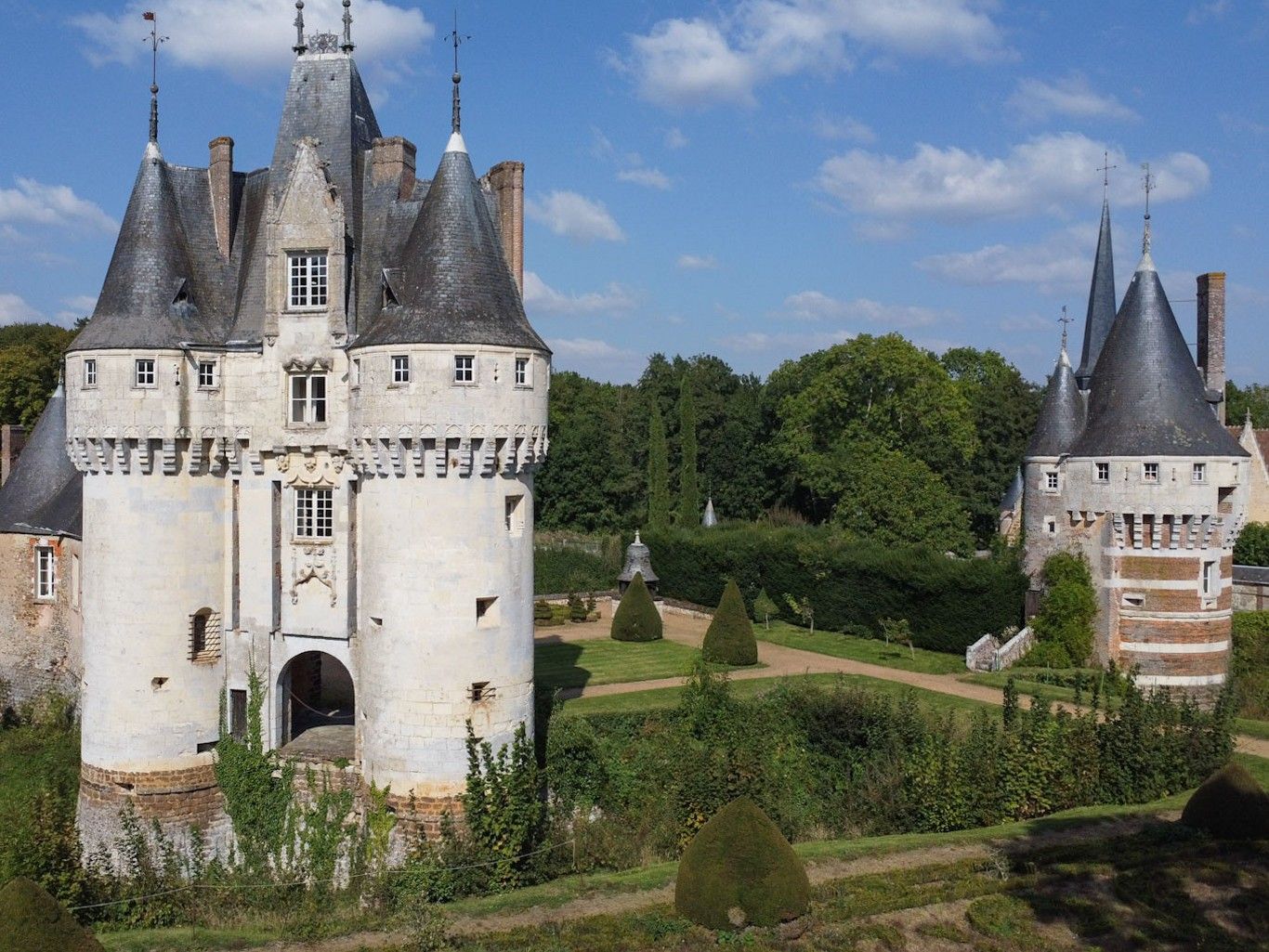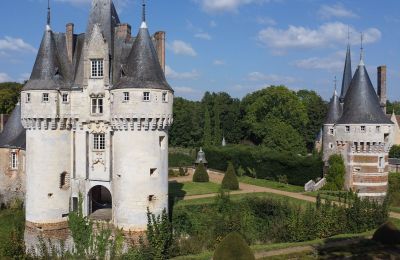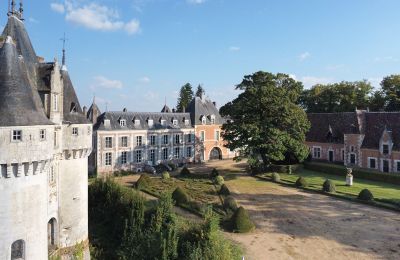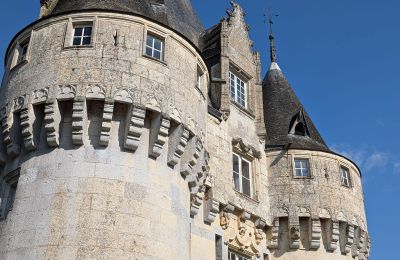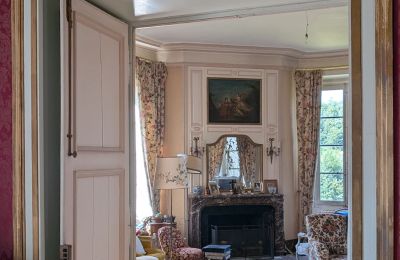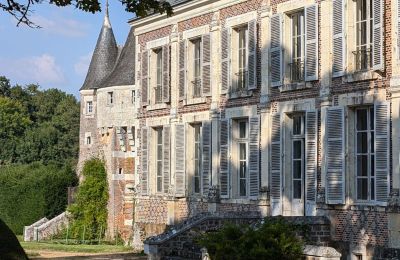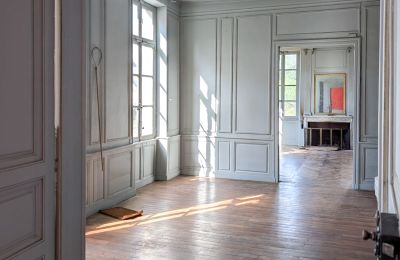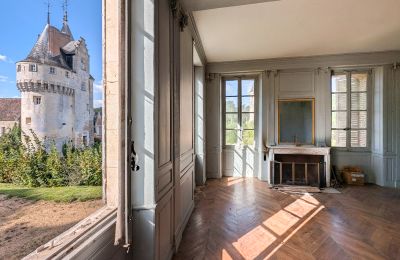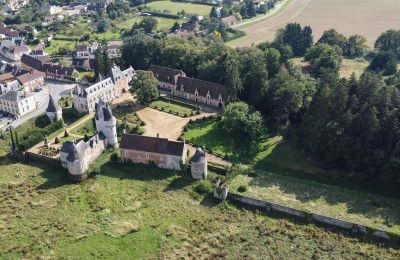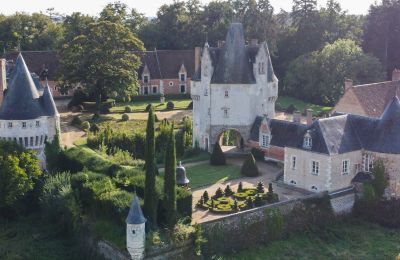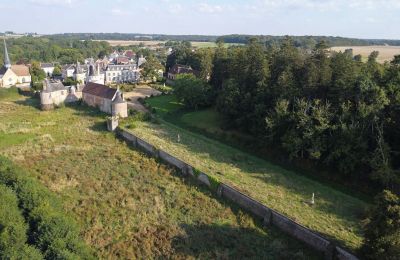At the edge of a small village in Perche, 120 km from Paris and 8 km from the highway, stands a monumental château complex with exceptional charm. It consists of 5 main buildings, dating from the 15th to the 20th century, and is built on the site of a château destroyed during the Hundred Years’ War.
- 120 km from Paris
- Château built between the 15th and 20th centuries
- Exceptional charm and appeal
- 5 main buildings
- 18 bedrooms
- 2,500 m² of built space
- South of Perche
- 8 km from the A10 exit
- 41 hectares of land
- Good overall condition of the shell, the interiors need complete restoration
- Listed as a Monument Historique (MH) in its entirety
The property has two entrances. The first, from the village side, is through a large wrought-iron gate and leads into the old porch house, which has been converted into a large living room. The second entrance, from the park side, is through a tall, defensive gate, dominated by the imposing towers of the "Water Tower." The impressive, richly decorated medieval Châtelet appears soon after crossing the bridge over the canal, followed by the other buildings that form an inner courtyard.
The versatility of this ensemble reflects the long history of the site.
The original medieval castle, with a square layout surrounded by moats, was destroyed in the first half of the 15th century by the Earl of Salisbury, commander of the English troops, during their march to besiege Orléans. In the late 15th and early 16th centuries, it was rebuilt, with the Châtelet, also known as "The Donjon," and the Saint-François Tower being preserved.
This medieval castle was integrated into the existing ensemble in the 19th century by demolishing one side and filling in part of the moats, which connected it to the "new" château.
The main part of the current château dates back to the 16th, 17th, and 18th centuries. The first pavilion, which forms the porch building, was built at the end of the 16th century and was extended in the second half of the 17th century with two small pavilions. In the 18th century, the ensemble was raised by one floor. The conversion of the porch building into a large office gave it its present-day appearance.
Together with the Louis XVI Pavilion and the other outbuildings, it forms a U-shaped courtyard with an unobstructed view of the magnificent 41-hectare park. This park includes an impressive 200-meter-long terrace overlooking a vast lawn, separated by a canal from a forest of beautiful deciduous trees on the other side.
The park is also known for its magnificent beech and yew topiary shrubs, a large avenue, and a one-hectare vegetable garden.
Buildings:
- "Le Pavillon du Bourg" – The château near the village square, built in the 16th, 17th, and 18th centuries.
- "The Donjon" – A small château from the 15th, 18th, and 20th centuries, combining a 15th-century gallery with a 1980s living area and an 18th-century tower.
- The Saint-François Tower – From the 15th century.
- The Louis XVI Pavilion – Also known as "Maison Renaissance," with its tower "The Bell," originally from the 16th century, remodelled in the 17th and 18th centuries.
- Outbuildings – Dating from the 16th, 19th, and 20th centuries, with beautiful 16th-century roof constructions.
Location:
- 120 km from Paris
- 16 km from the Paris exit
- 8 km to Le Mans
- 8 km from Brou, with access to shops and services
- Municipal water
- Partially connected to the sewage system, partially equipped with a septic tank
The château, its outbuildings, and the park have been classified as a historic monument by decree of November 24, 1948. The purchase price includes agency fees (5.67% fees payable by the buyer). Information regarding risks associated with this property is available on the Géorisques website: www.georisques.gouv.fr

